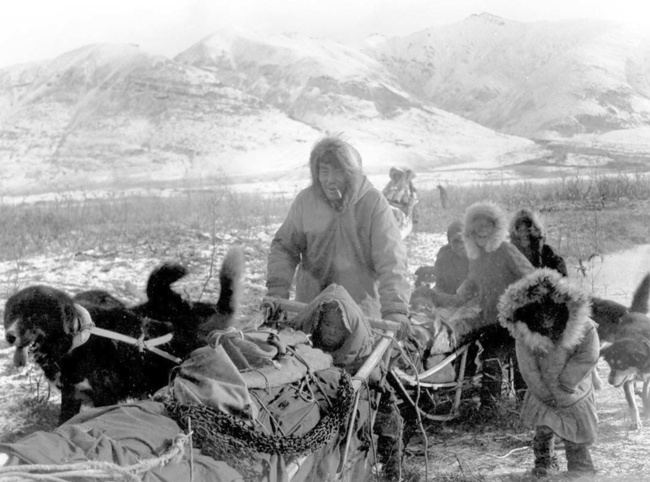 | ||
Skiku nordic skiing with nunamiut school anaktuvuk alaska
The Nunamiut or Nunatamiut "People of the Land" (Iñupiaq Nunataaġmiut) are semi-nomadic inland Iñupiat located in the northern and northwestern Alaskan interior, mostly around Anaktuvuk Pass, Alaska.
Contents
- Skiku nordic skiing with nunamiut school anaktuvuk alaska
- History
- Recording of culture and history
- Culture
- Language
- References

History
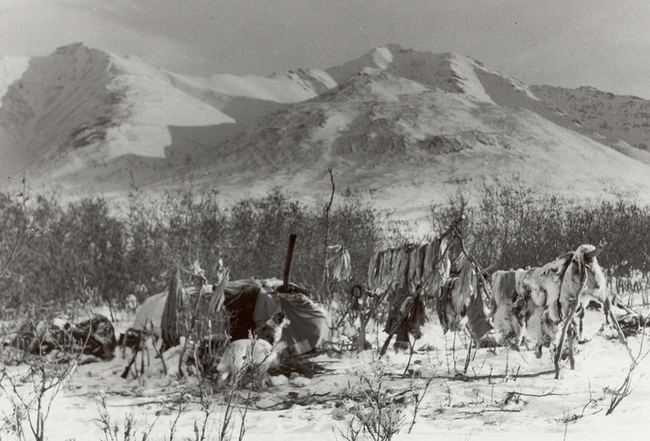
Early Nunamiut lived by hunting caribou instead of the marine mammals and fish hunted by coastal Iñupiat. After 1850 the interior became depopulated because of diseases, the decline of the caribou and the migration to the coast (including the Mackenzie Delta area in Canada, where they are called Uummarmiut) where whaling and fox trapping provided a temporarily promising alternative.
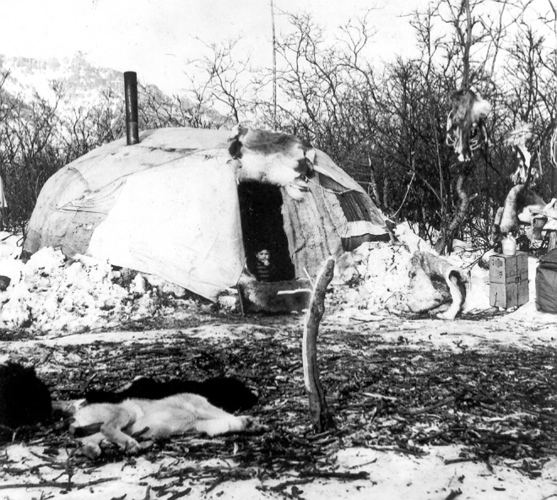
Historically they hunted caribou. When caribou numbers dwindled in the 19th century, some Nunatamiut migrated towards the Mackenzie River delta. Around 1910, with caribou continuing to be insufficient to sustain the native hunting, Nunatamiut migrated further into the Siglit area. They were spurred by increased demand for furs by the Hudson's Bay Company and the possibility of jobs within the whaling industry. The Inuvialuit of the Siglit area were unhappy with the arrival of the Nunatamiut, afraid that the Nunatamuit would deplete the Inuvialuit's Bluenose caribou herd. But the Nunatamiut, inland hunters of the Iñupiat region, were in high demand by the American whalers.
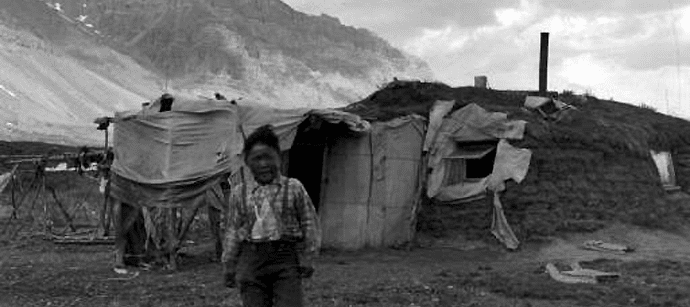
Eventually, the Nunatamiut who settled in the Siglit area became known as the Uummarmiut (people of the green trees) and intermarried with the local Inuvialuit.
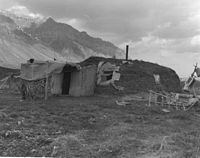
In 1938, several Nunamiut families returned to the Brooks Range, around Chandler Lake and the Killik River. In 1949, the Chandler Lake Nunamiuts moved to Anaktuvuk Pass; later, the Killik River group moved there also. Anaktuvuk Pass is the only Nunamiut settlement. A federally-recognized Alaskan village is located Anaktuvuk—the Village of Anaktuvuk Pass, the Naqsragmiut Tribal Council.
Recording of culture and history
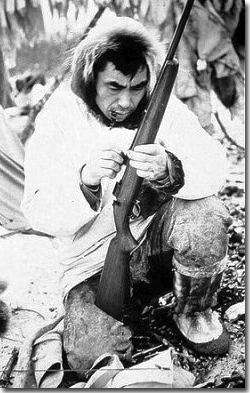
The Nunamiut were visited after World War II by Norwegian explorer and author Helge Ingstad. He stayed for a period in the Brooks Range in northern Alaska among the Nunamiut, and afterwards wrote Nunamiut - blant Alaskas innlandseskimoer (translation: "Nunamiut - Inland Eskimos of Alaska"). During the last few years of his life, he worked on categorizing and annotating the large quantity of photos and audio recordings (141 songs) he had made while living with the Nunamiut in 1950. The effort resulted in a booklet, Songs of the Nunamiut, with an accompanying CD containing the audio material. This is an extremely valuable contribution to the preservation of the Nunamiut culture, because it turned out that much of what he had gathered in the mid-20th century was now lost locally and was only preserved in his recordings.
Culture
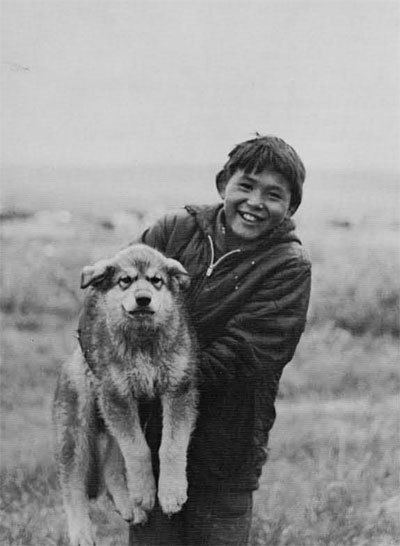
According to archaeologist Lewis Binford, the Nunamiut depend on meat more so than any other living hunter-gatherer group. The annual cycle of Nunamiut life revolves around the annual migrations of caribou.
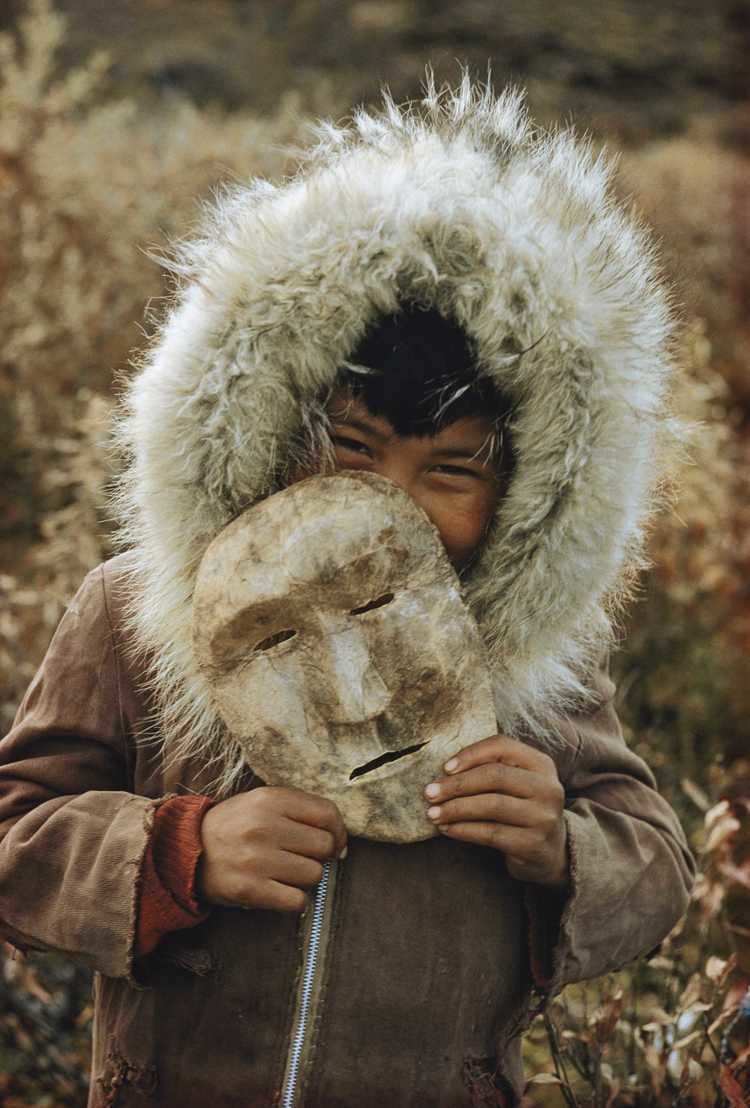
Spring: The main caribou migrations happen in March and April, when caribou move north through Anaktuvuk Pass to feed on the plains.
Summer: The plains thaw and become a marshland swarming with blackflies and mosquitoes.
Autumn: The caribou hunting cycle repeats in September and October when caribou retreat south again.
Winter: There are about 72 days of total winter darkness starting around November 15.
Language
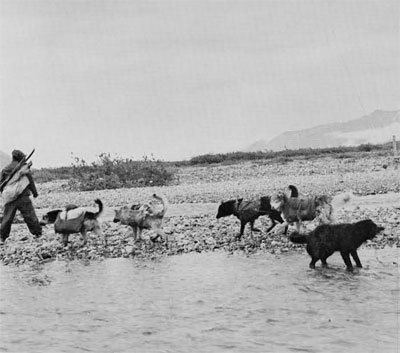
The native language of the Nunamiut is a dialect of Iñupiaq. In the late 1960s, the University of California, Berkeley sent undergraduate linguistics student (now Arctic explorer) Dennis Schmitt to the Nunamiut to study their dialect. There are few native speakers today.
The Nunamiut speak English. Their culture is contrasted by strong collectivist and individualist tendencies, both of which are a reflected in their "uncertainty language game". This involves one of five statements as part of a response: "I don't know", "maybe", "probably", "I guess", and "might be". Choosing the neutral "maybe" over "yes" or "no" reflects the cultural importance of a collectivist community. It also reflects behavior avoidance of an individual making a false statement.
